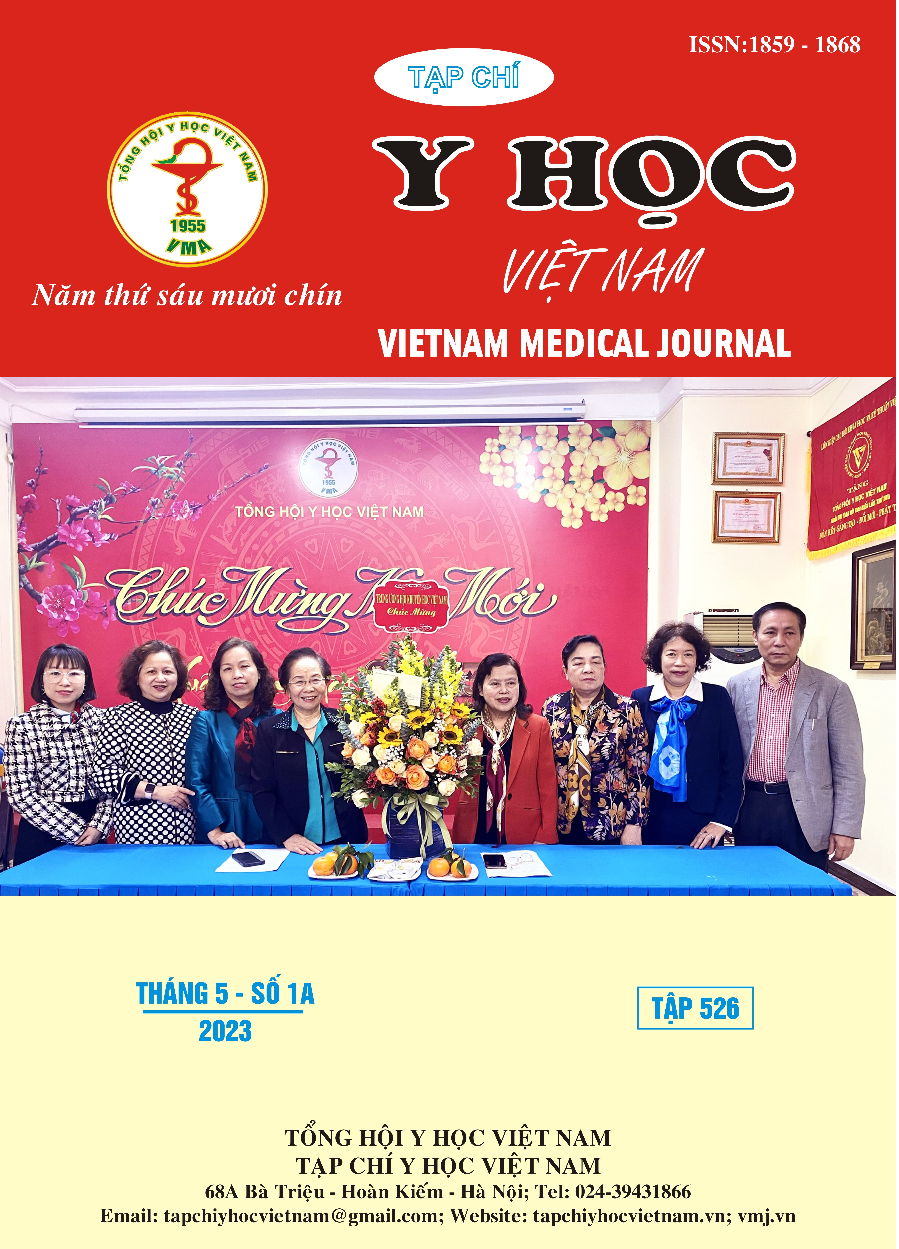THE RESULTS OF ACUTE URTICARIA FOR PATIENTS IN THE DERMATOLOGY DEPARTMENT OF HAI PHONG MEDICAL UNIVERSITY HOSPITAL
Main Article Content
Abstract
Subject: Patients with acute urticaria visited Dermatology Department of Hai Phong Medical University Hospital from February to September 2022. Research Methods: Cross-sectional study. The effectiveness of urticaria treatment on 60 patients was divided into 2 groups and they were treated using a regimen of single antihistamines and antihistamines + corticosteroids. Results: Research on 120 patients with acute urticaria recorded 63.3% female patients, 36.7% male patients. Most patients present for severe or very severe urticaria. Symptoms associated with urticaria are quinck edema 19.2%; abdominal pain 25.8%; dyspnea 21.7%. 28.3% of patients had eosinophilic BC in the blood. After 2 days of treatment, in the group with mild and moderate symptoms treated with antihistamines, the number of patients with symptoms decreased by 40%, with antihistamine + corticosteroid treatment, the number of patients with symptoms decreased by 60%. The group with severe and very severe symptoms treated with antihistamines, the number of patients with symptoms decreased by 13.3%, the number of patients with antihistamine + corticosteroid treatment reduced the number of patients with symptoms was 46.7%. After 5 days of treatment in the group with mild symptoms, on average, the number of symptomatic patients with anti-histamine treatment decreased by 80%, with anti-histamine + corticosteroid treatment, the number of patients with symptoms decreased by 93.3%. The group with severe and very severe symptoms treated with antihistamines, the number of patients with symptoms decreased by 26.7%, the number of patients treated with antihistamines + corticosteroids with symptoms decreased by 73.3%. Conclusion: Antihistamines + corticosteroids should be used to treat patient with severe and extremely severe acute urticaria.
Article Details
Keywords
Acute urticaria, effective treatment, Hai Phong medical university hospital
References
2. Zweim B et al (2000), “Sequential patterns of inflammatory events during developing and expressed skin late-phase reactions”, J Allergy Clin Immunol 105: 776.
3. Bernstein JA (2005), “Chronic urticaria: an evolving story”, Isr Med Assoc J 7(12): 774-7.
4. Gaig P et al (2004), “Epidemiology of urticaria in Spain”, J Invest Allergol Immunol 14: 214.
5. Nguyễn Thị Quỳnh Trang (2021), “Đánh giá hiệu quả điều trị mày đay mạn tính bằng Desloratadin kết hợp Montelukast”, Luận văn thạc sỹ y học, Bệnh viện Trung ương quân đội 108
6. Phạm Công Chính (2017), “Nghiên cứu kết quả điều trị bệnh mày đay cấp vô căn bằng kháng Histamin H1 phối hợp với Histamin H2 tại khoa da liễu Bệnh viện đa khoa Trung ương Thái Nguyên”.
7. Nguyễn Hữu Sáu (2011), “Khảo sát một số đặc điểm dịch tễ bệnh mày đay điều trị nội – ngoại trú tại bệnh viện Da liễu Ttrung ương”.
8. Nguyễn Thị Vân (2011), “Nhận xét đặc điểm bệnh mày đay và kết quả điều trị tại khoa Da liễu bệnh viện đa khoa tỉnh Thái Bình”.
9. Nguyễn Thái Bình (2015), “Nghiên cứu đặc điểm lâm sàng cận lâm sàng và một số nguyên nhân gây mày đay cấp vô căn”.


